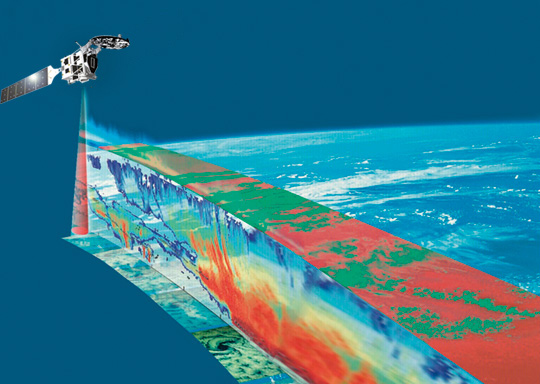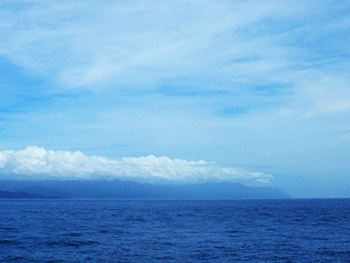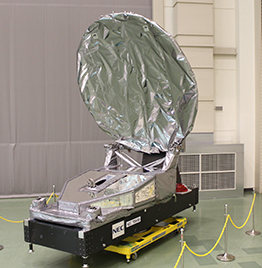Atmospheric lidar, on the other hand, developed in Europe, observes aerosols (fine particles suspended in the atmosphere) and very thin clouds with smaller diameters that cannot be observed by cloud profiling radar. Lidar, like radar, can obtain distance information. By combining lidar and cloud radar, we can simultaneously measure the extent and height of cloud particles and aerosols of different sizes and clarify their three-dimensional structures.
As already mentioned, EarthCARE's cloud profiling radar will be the first in the world to provide information on cloud ascent and descent rates on a global scale. Generally, an evolving cloud rises by gaining updrafts and buoyancy, and when sufficiently grown, it loses its buoyancy, and the heavier particles are dragged down by gravity. Although the vertical particle motion is strongly linked to the cloud growth process, detecting vertical cloud motion has been limited to ground observations.
The EarthCARE satellite will be able to observe clouds and aerosols simultaneously because clouds and aerosols are closely related. Cloud particles are formed when water vapor comes into contact with aerosols and becomes water or ice particles (condensation). Aerosols in clouds change the properties of the clouds in complex ways, such as when clouds composed of liquid water reduce the size of their particles. Conversely, some aerosols encourage the growth of ice particles in clouds with a mixture of water and ice cloud particles.
The EarthCARE project, which simultaneously equips a cloud profiling radar and an atmospheric lidar, is expected to provide new scientific knowledge not only on the vertical structure of clouds but also on the processes of cloud formation and dissipation and the interaction between clouds and aerosols. The vertical motion of clouds has not been adequately represented in numerical models due to a lack of global observational data and scientific understanding, a major source of error in climate change prediction. The observational data obtained from EarthCARE will dramatically improve the accuracy of numerical models for predicting climate change.


